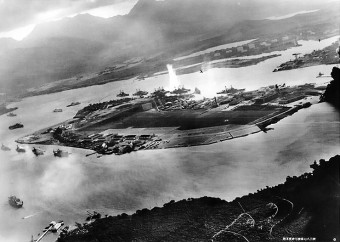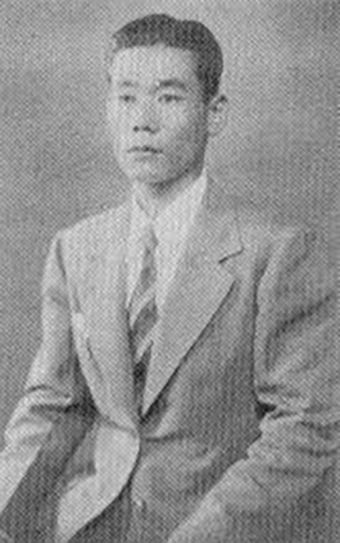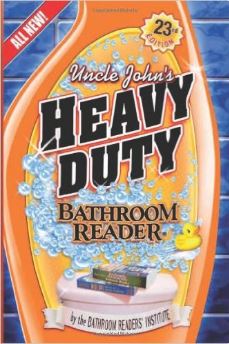Dustbin of History: The Pearl Harbor Spy
 The Japanese attack on Pearl Harbor on December 7, 1941, remains one of the most infamous events in U.S. history. Yet the spy who played a key role in the sneak attack is a forgotten man, unknown even to many World War II buffs.
The Japanese attack on Pearl Harbor on December 7, 1941, remains one of the most infamous events in U.S. history. Yet the spy who played a key role in the sneak attack is a forgotten man, unknown even to many World War II buffs.
UNDER COVER
On March 27, 1941, a 27-year-old junior diplomat named Tadashi Morimura arrived in Honolulu to take his post as vice-consul at the Japanese consulate. But that was just a cover—“Morimura” was really Takeo Yoshikawa, a Japanese Imperial Navy Intelligence officer. His real mission: to collect information about the American military installations in and around Pearl Harbor.
Relations between the United States and Japan had been strained throughout the 1930s and were now deteriorating rapidly. In 1940, after years of Japanese aggression in China and Southeast Asia, Washington froze Japanese assets in the U.S., cut off exports of oil and war material, and moved the headquarters of the U.S. Navy’s Pacific Fleet from southern California to Pearl Harbor, bringing it 2,400 miles closer to Japan.
The fleet was in Pearl Harbor to stay. But if Japan wanted its funds unfrozen and the crippling economic embargo lifted, the United States insisted that all Japanese troops had to leave China and Southeast Asia. This was a demand that Japan was unwilling to meet. Instead, it began preparing for war, and by early 1941, the eyes of Japan’s military planners had turned to Pearl Harbor.
THE AMERICAN DESK
Yoshikawa had become a spy in a roundabout way. He’d been a promising naval academy graduate, but his career hopes were dashed in 1936 when, just two years after graduation, stomach problems (reportedly brought on by heavy drinking) forced him out of the Japanese Navy. The following year he landed a desk job with Naval Intelligence, where he was put to work learning all that he could about the U.S. Navy.
From 1937 until 1940, Yoshikawa pored over books, magazines, newspapers, brochures, reports filed by Japanese diplomats and military intelligence officers from all over the world, and anything else he could find that would give him information about the U.S. Navy. “By 1940 I was the Naval General Staff’s acknowledged American expert,” he recounted in a 1960 article in the journal Naval Institute Proceedings. “I knew by then every U.S. man-of-war and aircraft by name, hull number, configuration, and technical characteristics. I knew, too, a great deal of general information about the U.S. naval bases at Manila, Guam, and Pearl Harbor.”
MISSION IMPLAUSIBLE
In August 1940, Yoshikawa was ordered to begin preparing for a spy mission in Pearl Harbor. And he was probably surprised by what his superiors told him next: He wasn’t going to receive any training in the art of espionage—none at all. He wasn’t going to receive any support from Japan’s Hawaiian spy network, either, because there wasn’t one. He would be the only Japanese spy in Hawaii, posing as one Tadashi Morimura, a low-level diplomat assigned to the consulate in Honolulu, and only the consul general would know his true identity and mission. The job paid $150 a month (about $2500 today), plus $600 every six months for expenses. In March 1941, Yoshikawa arrived in Honolulu.
A MAN WITH(OUT) A PLAN
Now what? Yoshikawa had received very little guidance on how to go about his job, but his worries ended when the consul general, Nagao Kita, took him to dinner at the Shuncho-ro, a Japanese restaurant on a hill overlooking Pearl Harbor. From a private dining room on the second floor of the restaurant, Yoshikawa could see both the Navy base and the nearby Army Air Corps base at Hickam Field laid out below. The Shuncho-ro was the perfect location for studying the flow of ships and aircraft in and out of the harbor, and it even had telescopes. It also happened to be owned by a woman who came from the same prefecture in Japan as Yoshikawa, and she happily made the private dining room (and telescope) available to the up-and-coming young diplomat whenever he requested it.
THE NATURAL
Yoshikawa quickly discovered that he could accomplish much of his spying without attracting attention, and without even breaking any laws. After all, Pearl Harbor was no isolated military installation; it was part of Honolulu, the Hawaiian Islands’ capital city and largest commercial port. Civilians, foreigners, and sightseeing tourists were everywhere. Even if the military had tried to shield Pearl Harbor’s operations from prying eyes, it would have been virtually impossible.
Yoshikawa collected a lot of useful information from his observations at the Shuncho-ro, and also by hiking the hillsides that overlooked Pearl Harbor. He could even rent planes at a nearby airport whenever he wanted to take aerial photographs of the ships at anchor. He blended in easily with the large Asian-American population, and he was careful to vary his routine, never visiting any one place too frequently, and never staying any longer than necessary. Sometimes he posed as a laborer; other times he put on a loud Hawaiian shirt and masqueraded as a tourist. When he felt conspicuous traveling alone on, say, a visit to a military air show or a plane or boat ride around the harbor, he’d take one of the geisha girls who worked at the Shuncho-ro or one of the female consular staff on a “date,” always being careful not to reveal his true identity or mission to his companion. An experienced long-distance swimmer, Yoshikawa also made many swims around the harbor to study its defenses. By breathing through a reed, he could swim underwater when he needed to avoid detection.
NICE TO MEET YOU
After a long day of spying on land or in the water, Yoshikawa passed many an evening picking up hitchhiking U.S. soldiers or buying drinks for servicemen in bars, prying as much information out of them as he could without arousing suspicion. (Soldiers who were tight-lipped around male foreigners often happily spilled the beans to the geishas at the Shuncho-ro, so Yoshikawa made sure to question them, too.) After the restaurants and bars closed, he would pose as a drunken bum and scour the dumpsters outside of military installations for any documents he could get his hands on.
Yoshikawa rarely took photographs, and he never drew diagrams or wrote anything down while making his rounds. He never carried a notepad: Instead, he relied on his exceptional memory to record every detail—locations and numbers of ships and aircraft, the timing of their arrivals and departures, the depths of water in different parts of the harbor, everything—so that if he was stopped or questioned, there would be no evidence on him that suggested he was a spy. He never even carried binoculars for fear they would call too much attention to him or arouse suspicion.
PACKING A PUNCH
If Japan had planned its attack on Pearl Harbor without the data Yoshikawa gathered, it’s quite possible that it would have been merely a glancing blow, one that damaged the Pacific Fleet but did not knock it out of commission. But the information Yoshikawa provided was devastating:
- When he reported that air patrols rarely watched the waters north of Oahu (where the seas were thought to be too treacherous for an enemy to mount an attack), the Japanese military planners decided to attack from that direction.
- When he told them the water in the harbor wasn’t deep enough for ordinary torpedoes, they devised a torpedo with special fins that would work in shallow water.
- When Yoshikawa told them that the ships along “Battleship Row” were moored in pairs to protect the inboard ships from torpedo attacks, the planners decided to attack those ships with armor-piercing bombs dropped from dive-bombers.
- When he reported that ships commonly left the harbor for maneuvers on Monday and returned to port at the end of the week, the planners set their attack for the weekend.
- When they asked Yoshikawa which day of the weekend the most ships were likely to be in the harbor, he replied simply: “Sunday.”
BEFORE THE STORM
On the evening of Saturday, December 6, 1941, Yoshikawa sent what would turn out to be the last of his coded messages to Tokyo:
VESSELS MOORED IN HARBOR: NINE BATTLESHIPS; THREE CLASS-B CRUISERS; THREE SEAPLANE TENDERS; SEVENTEEN DESTROYERS. ENTERING HARBOR ARE FOUR CLASS-B CRUISERS; THREE DESTROYERS. ALL AIRCRAFT CARRIERS AND HEAVY CRUISERS HAVE DEPARTED HARBOR….NO INDICATION OF ANY CHANGES IN U.S. FLEET. “ENTERPRISE” AND “LEXINGTON” HAVE SAILED FROM PEARL HARBOR….IT APPEARS THAT NO AIR RECONNAISSANCE IS BEING CONDUCTED BY THE FLEET AIR ARM.
Though Yoshikawa provided much of the intelligence used to plan the attack on Pearl Harbor, he did not know when—or even if—it would occur. (“To entrust knowledge of such a vital decision to an expendable espionage agent would have been foolish,” he later explained.) He learned the attack was under way the same way that Hawaiians did: by hearing the first bombs go off as he was eating breakfast, at 7:55 a.m. on the morning of the 7th.
INFAMY
Yoshikawa had been feeding the war planners in Japan a steady stream of information for eight months, and his efforts had paid off. The Japanese military accomplished its objective with brutal effectiveness: The naval strike force, which included nine destroyers, 23 submarines, two battleships and six aircraft carriers bristling with more than 400 fighters, bombers, dive-bombers and torpedo planes, had managed to sail more than 4,000 miles across the Pacific undetected and then strike at the home base of the U.S. Pacific Fleet while its ships were still at anchor and the Army Air Corps planes were still on the ground.
 Twenty American warships were sunk or badly damaged in the two-hour attack, including the eight battleships along Battleship Row, the main target of the raid. More than 180 U.S. aircraft were destroyed and another 159 damaged. The destruction of the airfield on Ford Island, in the very heart of Pearl Harbor, was so complete that only a single aircraft managed to make it into the air. More than 2,400 American servicemen lost their lives, including 1,177 on the battleship Arizona, and another 1,178 were wounded. It was the greatest military disaster in United States history.
Twenty American warships were sunk or badly damaged in the two-hour attack, including the eight battleships along Battleship Row, the main target of the raid. More than 180 U.S. aircraft were destroyed and another 159 damaged. The destruction of the airfield on Ford Island, in the very heart of Pearl Harbor, was so complete that only a single aircraft managed to make it into the air. More than 2,400 American servicemen lost their lives, including 1,177 on the battleship Arizona, and another 1,178 were wounded. It was the greatest military disaster in United States history.
The Japanese losses were miniscule in comparison: 29 planes and 5 midget submarines lost, 64 men killed, and one submariner taken prisoner—the first Japanese P.O.W. of the war—when his submarine ran aground on Oahu.
INVISIBLE MAN
 The FBI raided the Japanese consulate within hours, but by then Yoshikawa had burned his code books and any other materials that would have identified him as a spy. He was taken into custody with the rest of the consular staff, and in August of 1942 they were all returned to Japan as part of a swap with American diplomats being held in Japan.
The FBI raided the Japanese consulate within hours, but by then Yoshikawa had burned his code books and any other materials that would have identified him as a spy. He was taken into custody with the rest of the consular staff, and in August of 1942 they were all returned to Japan as part of a swap with American diplomats being held in Japan.
Yoshikawa worked in Naval Intelligence for the rest of the war. When Japan surrendered in August 1945, he hid in the countryside, posing as a Buddhist monk, fearful of what might happen to him if the American occupation forces learned of his role in the Pearl Harbor attack. After the occupation ended in 1952, he returned to his family. In 1955 he opened a candy business.
By that time Yoshikawa’s role in the war had become widely known, thanks to an Imperial Navy officer who identified him by name in a 1953 interview with the newspaper Ehime Shimbun. If Yoshikawa thought the exposure would bring him fame, fortune, or the gratitude of his countrymen, he was wrong on all counts. Japan had paid a terrible price for starting the war with the United States: On top of the estimated 1.6 million Japanese soldiers who died in the war, an additional 400,000 civilians were killed, including more than 100,000 who died when atomic bombs were dropped on Hiroshima and Nagasaki. Few people wanted anything to do with the man who helped bring such death and destruction to Japan. “They even blamed me for the atomic bomb,” Yoshikawa told Australia’s Daily Mail in 1991, in one of his rare interviews with the Western press.
The candy business failed, and Yoshikawa, now a pariah in his own land, had trouble even finding a job. He ended up living off of the income his wife earned selling insurance. He never received any official recognition for his contribution to the war effort, not a medal or even a thank-you note, and when he petitioned the postwar government for a pension, they turned him down. By the end of his life he had returned to the same vice that supposedly landed him in the spying business in the first place: alcohol. “I drink to forget,” he told a reporter. “I have so many thoughts now, so many years after the war. Why has history cheated me?” He died penniless in a nursing home in 1993.
FINAL IRONY
Yoshikawa was the only Japanese spy in Honolulu before the outbreak of war; only the consul general knew his true identity and purpose, and with the exception of the geishas, his driver, and others who assisted him without fully realizing what he was up to, he worked alone.
And yet it was the Roosevelt administration’s fear that other Japanese spies might be out there, both in the Hawaiian Islands and on the West Coast of the United States, that prompted the federal government to round up 114,000 Japanese Americans and incarcerate them in internment camps for the duration of the war. Many were given only 48 hours to put their affairs in order and as a consequence lost everything they owned.
Not a single internee was ever charged with espionage, and no one understood better than Yoshikawa that they were innocent. He knew because he had tried to recruit Japanese Americans, sounding them out about their loyalties without revealing his purpose, and had failed. “They had done nothing. It was a cruel joke,” he admitted to the Daily Mail. “You see, I couldn’t trust them in Hawaii to help me. They were loyal to the United States.”
 This article is reprinted with permission from Uncle John’s Heavy Duty Bathroom Reader. The big brains at the Bathroom Readers’ Institute have come up with 544 all-new pages full of incredible facts, hilarious articles, and a whole bunch of other ways to, er, pass the time. With topics ranging from history and science to pop culture, wordplay, and modern mythology, Heavy Duty is sure to amaze and entertain the loyal legions of throne sitters.
This article is reprinted with permission from Uncle John’s Heavy Duty Bathroom Reader. The big brains at the Bathroom Readers’ Institute have come up with 544 all-new pages full of incredible facts, hilarious articles, and a whole bunch of other ways to, er, pass the time. With topics ranging from history and science to pop culture, wordplay, and modern mythology, Heavy Duty is sure to amaze and entertain the loyal legions of throne sitters.
Since 1987, the Bathroom Readers’ Institute has led the movement to stand up for those who sit down and read in the bathroom (and everywhere else for that matter). With more than 15 million books in print, the Uncle John’s Bathroom Reader series is the longest-running, most popular series of its kind in the world.
If you like Today I Found Out, I guarantee you’ll love the Bathroom Reader Institute’s books, so check them out!
| Share the Knowledge! |
|





It’s sad his government would use him and just throw him away because they lost in the end. If they would of won he probably would of been a national hero.
A new anime just premiered in Japan called “Joker Game.” It’s about a Japanese spy training agency set up in 1937. I’m pretty sure the training regiment portrayed in the show (and its original novel) drew heavily from what this guy did.